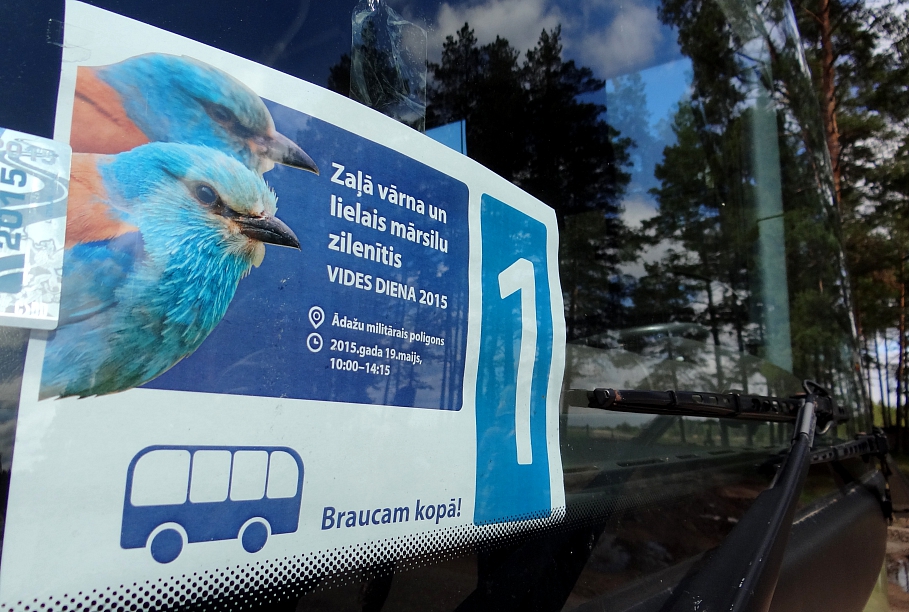The Defense Ministry’s Military Object Procurement Center organized its own so-called Environment Day on the grounds of the Ādaži Training Area for the civilian community as a unique opportunity for them to see otherwise restricted territories there. There are three types of fragile biotopes within the zone – heath-, bog- and woodlands, which have been home to some rare and endangered species no longer surviving elsewhere.
The rare blue butterfly known as Large Blue (declared Insect of the Year for 2015) and an incredibly far-migrating and spectacularly plumed bird called the European Roller (which held the honor of Bird of the Year in 1998) both survive inside the army base’s sandy heath-field biotope.

They are just two of the various threatened or endangered species that have been targeted for protection measures co-funded by the European Union’s LIFE+ program.
Named ‘Birds in Adazi’, the project entails joint landscape management efforts of the NBS, the Ornithology Society, Latvian State Forests and the Sēja district council. From 2014 through 2017, the funding will go towards renewing and maintaining the total 1620 hectares of territory harboring the three sensitive biotopes.
In addition to the Roller (coracias garrulous) and Large Blue (phengaris arion), many other species of flora and fauna unique to these biotopes still thrive amidst the artillery fields and training grounds where the NBS and its NATO allied troops are constantly testing their mettle and munitions.
Instead of driving the animals away, in fact the 100 years of military activity have preserved the landscape, keeping it from deteriorating like other areas where development and access has never been restricted.
Ornithologist Edmunds Račinskis and entomologists Kristaps Vilks and Voldemārs Spuņģis each held brief field lectures for the curious kids and nature-lovers, showing where the Roller’s birdhouses and perching posts have been erected so it can get to its favorite big bugs, or special flag-markers planted amidst the heath where the Large Blue can drop its eggs into the exclusively appropriate spots that ensure its survival (thanks to a symbiotic relationship with a species of ants which adopt the butterfly larvae only to have it grow large and munch up all of their own ant-larvae).
The European Roller travels from its winter home in southern Africa (below the equator) in a huge arc across the Arabian peninsula to its currently farthest-northern summertime homeland in the northeastern suburbs of Riga, where it usually arrives by the start of May. Then in August it heads straight due south back to Africa.
The Large Blue relies on its symbiotic (actually parasitic) relationship to both the tiny stinging ants and the thyme growth clusters that give its larvae the tell-tale scent to attract the ants. Its unique violet-blue wings have patterns of black dots to distinguish it from other species.
Following the fascinating lectures of the scientists, the groups were escorted to view some of the heavy military equipment used in the training of troops residing at the adjacent Camp Ādaži . There they clambered into tanks, tried on bullet-proof vests and other gear and posed amidst the guns and rocket launchers that NBS and US Army soldiers showed them (without demonstrating any firepower, of course).
Among the participants on the NBS’ environmental field trip were members of the Junior Home Guard from around the country, and special-interest clubs of budding zoologists and geologists from the Latvian Nature Museum’s extra-curricular School of Natural Sciences.
































